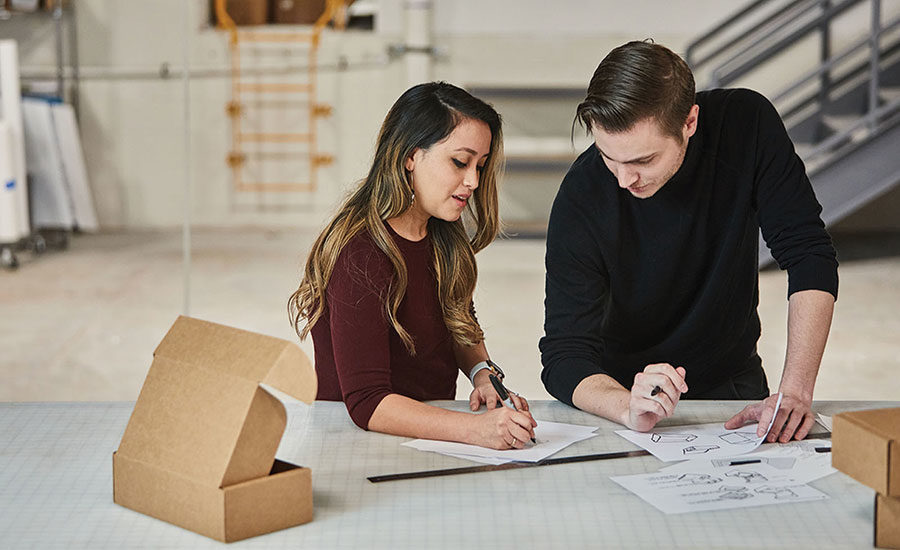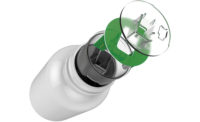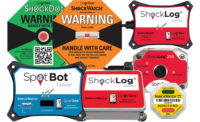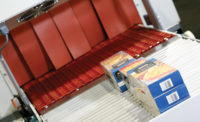As the saying goes, you only get one chance to make a first impression. In the packaging world, flexible packaging is considered by many to be the optimal way for a company to put its best foot forward. Since the 1950s, flexible packaging has been driving innovation in the industry1, offering businesses a more affordable and customizable alternative to rigid packaging. Comprised of lightweight materials, often plastic or resin-based, flexible packaging has long been the preferred solution for food brands, consumer packaged goods and pharmaceutical companies, among others. But what is it about flexible packaging that makes it so impressive? And how can flexible packaging continue to evolve and innovate? There are three key insights that cement why flexible packaging is, and will remain, a premium packaging solution.
Packaging that Makes an Impression
In today’s digital world, the “unboxing” of a package is a distinct and anticipated consumer experience. At its core, unboxing combines the senses of sight, sound, touch and sometimes smell to make customers feel valued by the brand. Done right, it can lead to strong customer loyalty. Leveraging digital printing on flexible packaging, companies can utilize the box interior to offer consumers a richer brand experience. By including a company or product logo, a QR code or promotional information, customized flexible packaging delivers a call to action driving consumers back to the company’s website, social channels or product promotion platforms resulting in enhanced consumer engagement with the brand.
But how can a company keep repeat customers engaged and excited about the unboxing experience? Flexible packaging allows companies to easily and affordably personalize with digital printing, so every unboxing experience is new to the consumer. Small modifications to the packaging will ensure that the consumer experience is always fresh and allow for an evolving “conversation” between the purchaser and the brand. When looking for a flexible packaging partner, companies should look for specialists that can offer packaging design and expertise, all the way through materials sourcing and production. When one company provides packaging consultation from start to finish, they can work with the brand to design packaging that tells the brand’s story in a unique and impactful way.
Smart Solutions for an eCommerce World
It is undeniable that ecommerce is a mainstay of American life. While rigid packaging has historically been the go-to for shipment because of its durable nature, flexible packaging is evolving to be a viable alternative for certain companies. While not as structured as rigid packaging, flexible packaging is designed to absorb shock and impact, protecting the contents inside. In fact, flexible packaging — whether it be a mailer or a bag — can replace the box for a host of less-fragile materials including books, clothing and pharmaceuticals, just to name a few. Flexible packaging is more economic to produce and takes up less space in transport, which maximizes space thereby reducing costs and increasing value for brands by allowing them to ship more products at the same time.
But, it is not enough just to suggest that companies adopt smart packaging solutions. In 2019, Amazon implemented the Amazon Packaging Support and Supplier Network (APASS) for vendors and manufacturers to certify the durability of their packages. To achieve certification, packages must go through a series of rigorous tests that evaluate the impact of shock, compression, vibration and extreme temperatures. Billions of packages are fulfilled through Amazon every year, so brands looking to compete in the e-commerce space should seek out companies that can complete APASS testing and certification while providing design recommendations for packages that do not meet the requirements.
By mandating that packages be APASS-certified, Amazon is requiring companies to look at all packaging options and alternatives to adopt the solution that will best serve the product they are looking to ship. For some, flexible packaging is the right solution, and Amazon’s requirement helps ensure that it is a viable option for implementation.
Smart Sustainability for the Future
As brands are facing increasing pressure from consumers to establish, maintain and expand sustainable business practices, packaging is undergoing the same scrutiny. There are alternate flexible packaging materials available that are not only sustainable, but also appealing to the consumer, making them a great option for brands looking to incorporate more sustainable business practices.
Fiber-based flexible packaging, such as craft paper, not only provides true protection for materials but is also curbside recyclable, thus, supporting a brand’s effort to use more sustainable packaging. Even certain plastic flexible packaging has now been engineered to be more environmentally friendly.
The packaging industry has invested in technology to reduce the contents required to contain and secure a load. With proper stacking and loading of a palate, manufacturers can employ a thinner but equally durable plastic to secure the materials so, once discarded, it requires less space and reduces waste. This process, known as downgauging, signifies manufacturers’ commitment to continually evolve industry practices and improve them whenever possible.
Many of the environmental advancements are driven by specific industry needs. Among Veritiv’s customers is a bakery and snack food distribution company that sought out Veritiv to create packaging that was 33% compostable and renewable. Using 100% natural starch products and soy-based inks, Veritiv designed a nine-color process print bag that reduced labor costs. Consumers are increasingly concerned about the environment, and they will continue to support companies that echo those values. The transition to a compostable bag helped create loyalty among the existing customer base and attract new ones. At Veritiv, we’ve seen time and time again that a brand’s commitment to sustainability not only provides an environmental benefit, but a financial one.
Flexible packaging continues to be one of the most dynamic options for companies seeking impactful, portable and responsible packing solutions. It truly helps companies to make a better first impression and continue to delight consumers around the world. As the industry continues to evolve, expect flexible packaging to be at the forefront in driving innovation and advancement in the packaging world.





